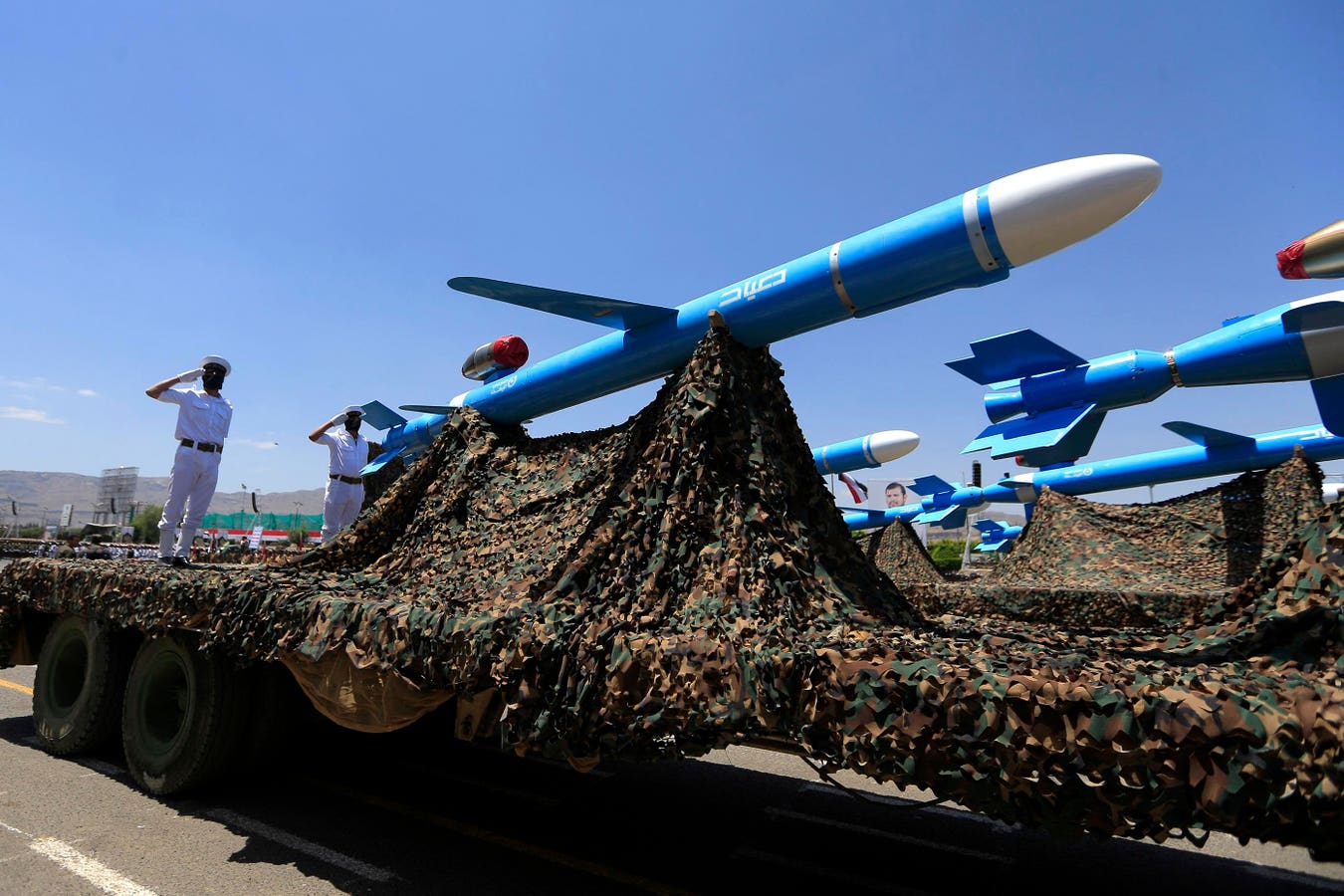The Israeli military confirmed that a cruise missile fired by the Houthis in Yemen hit an open area near the southern Israeli city of Eilat early Monday. The Yemen-based group is not the only Iran-backed militia in the region with cruise missiles that could potentially strike Israel.
The Houthis launched several ballistic missiles and drones toward Israel since the current war in the Gaza Strip began in October. Israel’s multilayer air defenses and the U.S. Navy intercepted several of these munitions.
There’s already speculation that the Houthis used their longest-range cruise missile, the Iranian-designed Quds-3 since that’s the only type the group is known to possess capable of reaching Eilat from Yemen. Unlike ballistic missiles, cruise missiles can fly at low altitudes and follow a flexible path, making them less predictable and potentially difficult to intercept. It’s unclear if the Houthi missile successfully evaded Israeli air defenses or if Israel merely determined it wasn’t a threat to any populated area.
While the Houthis vast array of missiles and drones have repeatedly grabbed headlines since October, the Yemen-based group isn’t the only regional Iran-backed militia with cruise missiles, which is significant since these other groups are also situated much closer to Israel.
In Israel’s immediate vicinity, there is evidence that Iran has attempted to help Hamas build cruise missiles inside Gaza.
In early January, Israeli troops uncovered an underground weapons manufacturing plant containing “components” the Israeli military affirms proved Hamas “learned under Iranian guidance how to operate and build precision components and strategic weapons.” The components included a rocket engine and cruise missile warhead Hamas had been developing in the underground site.
Further afield in the same month, Iran-backed militias in Iraq were also revealed to have Quds-2 cruise missiles when one that had failed to launch was found and photographed by Iraqi police in Babil south of Baghdad.
Less than a week later, Iran-backed groups claimed they targeted Israel’s second city Haifa with what it called an “enhanced cruise missile” named “Al-Arqab.” Hezbollah leader Hassan Nasrallah also claimed a cruise missile fired from Iraq had hit Haifa and that Israel kept the incident secret.
These Iraq-based groups have claimed responsibility for repeated attacks against Israel in recent months. In March, they claimed to have targeted Ben Gurion Airport in Tel Aviv twice in one week with drones. Incidentally, these militias also claimed they targeted Eilat “with appropriate weapons” in December. Unlike Monday’s attack, however, Israel did not confirm any of these strikes.
Iran has long sought to arm its militias with increasingly sophisticated weapons, especially missiles, rockets, and drones, and the means to assemble and manufacture them locally. One Iranian commander summed up this broad strategy as “teaching a man how to fish” rather than having him rely on the provision of fish, as goes the time-old proverb.
“As part of its policy of strategic patience, Iran has bided its time, avoiding implication in direct conflict all the while improving the capabilities of the militias it supports, including Hezbollah, Hamas, Palestinian Islamic Jihad, Houthis, and a range of Iraqi groups,” Arash Azizi, senior lecturer in history and political science at Clemson University and author of The Shadow Commander: Soleimani, the U.S., and Iran’s Global Ambitions and What Iranians Want: Women, Life, Freedom, told me.
“These groups’ missile capabilities have dramatically improved in the last few years,” Azizi said. “If you compare Hezbollah’s current missile capabilities with those in 2006, you’ll see just how far it has advanced.”
The Lebanon-based Hezbollah, Iran’s most powerful militia proxy, has amassed an arsenal of over 100,000 surface-to-surface missiles, with an increasing number precision-guided. The group is also believed to possess powerful Russian-built Yakhont anti-ship cruise missiles, with a range of 186 miles.
In light of the unprecedented military cooperation between Iran and Russia in recent years, Moscow has shown increasing reluctance to interfere with the flow of arms to Hezbollah and other Iran-backed groups in Syria and Lebanon. U.S. officials even suspect Russia’s Wagner group has plans to provide Hezbollah with a Russian-built Pantsir-S1 air defense system.
“Hamas and pro-Tehran Iraqi militias are now in advanced stages of producing most of their weaponry locally, although there is still significant Iranian support in all levels, including provisions of parts, military training, and financial help,” Azizi said.
“U.S. and Israel continue to have overwhelming military superiority, of course,” he added. “But in any serious battle, Hezbollah and its Iraqi and Iranian allies will be much more effective than they have ever been—by my estimation, many more times than they were in 2006.”
Read the full article here





